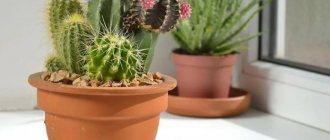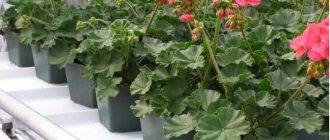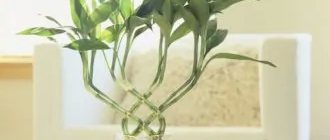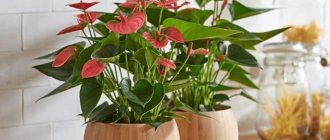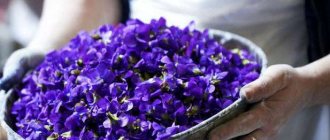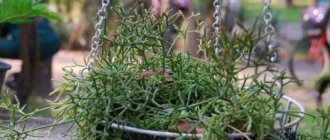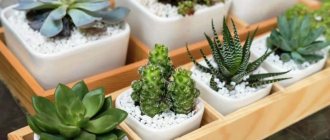In the numerology of beautiful hydrangea
corresponds to the number “11”, which means the balance between good and evil. Surprisingly, when preparing the material, we discovered that both good and bad beliefs are associated with hydrangea, as if it really absorbed good and evil symbolism.
Hydrangea - signs and superstitions “for good”
For harmony
Hydrangea or hydrangea is a low shrub with long and luxurious flowering. Many gardeners love it and actively cultivate it on their site. Interestingly, the hydrangea near the house is not described as something harmful. Vice versa! Outdoors, among other plants, it will show its best qualities. It is believed that:
- “Flower of Life” disciplines the owner;
- Makes you reconsider your views;
- Get closer to perfection.
From dependencies
Garden hydrangea is an excellent fighter against bad habits. If a person cannot get rid of cravings for nicotine or alcohol, a regular walk among flowering bushes will strengthen his will. The same applies to other temptations.
The plant “cleanses” emotions and thoughts, saves from attacks of anger, and serves as a talisman of marital fidelity.
Where is the best place to put it?
The best place to place gardenia is the bedroom. In the bedroom, a flower will be able to fully demonstrate its magical properties of the element of Wood; it will protect night's sleep and spread an atmosphere of love, trust and mutual understanding. To get rid of financial problems and manifest the power of the Metal element, it is recommended to place a blooming gardenia on a western window. You can put a flower in the nursery, then it will protect you from the whims of the child and maintain a positive aura in the space.
At home
But is it possible to keep hydrangea at home? Signs do not recommend doing this for several reasons.
Pagan and Christian myths
It was the fragrant hydrangea buds that believers carried to the tomb of Jesus Christ. Since then, the plant has symbolized the deepest sorrow.
- Sometimes you can hear about this sign: indoor hydrangea attracts suffering into the house if it is there at any time except Easter.
East and West
- In the East, the groom can give a fragrant gift to his bride to emphasize the depth of feelings and nobility of intentions.
- But according to European tradition, hydrangea is a symbol of unrequited, even tragic love, leading to loneliness. A pot of hydrangea on the windowsill of a single person is a hint of his inability to start a family or simply find a suitable life partner. Receiving such a gift is akin to a curse.
Allergy
But not only signs and superstitions prohibit keeping hydrangea in the house. When flowering, it releases special substances to which some sensitive people develop an acute allergic reaction.
However, even an absolutely healthy person may feel unwell if the plant is placed in the bedroom; the likely consequences include headache, insomnia, and irritability.
- This will be especially dangerous if there are small children in the house all the time.
Is it dangerous for children?
Children are very inquisitive, especially the little ones. They are used to exploring the world in all available ways and often put everything that comes their way into their mouths. If your child is near a hydrangea, you should be extremely careful.
Try to explain to a child at a more conscious age that approaching her is dangerous. Teach your children from a very young age not to pick up or put unfamiliar plants into their mouths with their bare hands. A child’s body is still quite fragile, so if a child does eat hydrangea, go to the hospital immediately.
Eastern superstitions associated with hydrangea
Let's look at Asian traditions regarding shrubs, because in China and Japan it is more popular than in other countries. The origins of Europeans' attitude towards hydrangea lie in Eastern culture.
The shade of the inflorescences of the bush changes depending on the composition of the soil, so the flowers are associated with the feminine principle. Just like hydrangea, a woman can be different: she applies makeup depending on her mood and desires. The connection between flowers and the fair sex can be traced in signs:
Pink
and purple inflorescences give a woman energy, playfulness, joy and a desire to flirt. But, if you want your beloved to be more discreet, choose white varieties as a gift or plant them in the garden.
The hydrangea inflorescence consists of miniature flowers that signify family ties. Plant a bush near the house to keep the family strong and united.
The inflorescences resemble a sphere, and in the East the ball is considered one of the best geometric shapes. This flower shape helps to achieve harmony, calm and tranquility, smoothes out conflicts and quarrels.
According to the teachings of Feng Shui, it is correct to plant a bush in the south, southwest, east or southeast, then it will bring good luck to the house. Be sure to choose the sunny side for the plant to bloom, otherwise there will be no positive effect.
If you are given a bouquet of hydrangeas, take good care of it. Remove dried inflorescences and change the water every day. Dried flowers and stagnant water are sources of negative energy. When a lot of it accumulates, troubles and failures arise.
Popular beliefs
Since ancient times, gardenia has been associated with love, chastity and fidelity, so the plant is perfect for decorating wedding ceremonies. Gardenia flowers are used to make bouquets, use a single flower as a boutonniere, or add the plant to other decorations. Using a flower during a wedding promises the newlyweds love for many years to come.
Gardenia oil is recommended for use when taking a bath. This ritual is believed to increase personal magnetism, giving strength and self-confidence.
Gardenia jasmine is also used in love rituals to arouse the sympathy of another person. For this:
- The flowers are ground into powder
- Rub into the skin before meeting your significant other.
- This powder can also be sprinkled on the threshold of your house, through which the chosen person must step.
Gardenia flowers are taken to important meetings to win love or find new friends and partners. Do you want to please the opposite sex? A simple ritual will help with this:
- Dry and crumble the petals.
- Mix them with orris root powder.
- Lightly powder your body with the mixture.
Your success is guaranteed.
According to popular belief, if you feel bad, then just sit down next to a flower and talk through all your problems. Gardenia calms the soul, helps to forget all the bad things and activates a new perspective on old problems. Many psychics call gardenia a “home psychologist.” The energy “feed” from the plant can literally breathe new strength into you.
For girls, gardenia can become a best friend, because it is believed that this species has feminine energy and the presence of a tropical beauty in the house will help attract men and contribute to the creation of strong unions.
Bad omens about hydrangea
In the East, there are several negative interpretations of hydrangea. But we cannot say that they are unequivocally negative; some have very real root causes that are no longer relevant today, which means that the superstition has lost its force.
Some Japanese families do not plant hydrangea near their home because they believe that it is associated with death and is a mourning plant. The rainy season in Japan coincides with the peak flowering of hydrangeas. When medicine was not developed, many people died during this period. But in the 21st century, rains do not affect life expectancy, so the belief makes no sense.
Why does the plant bloom?
Gardenia, like a sponge, absorbs the atmosphere in the house, so by its condition you can easily determine the aura in the family.
If it is fresh and green, blooms profusely and does not lose leaves, then everything will work out perfectly for household members in their personal and professional lives. After the first flowers appear on the plants, expect financial profit or a promotion at work.
As soon as the bush turns yellow, expect problems. If the leaves of a flower begin to wither, this indicates that either inappropriate conditions have been created for the gardenia, or an unfavorable environment has reigned in the house and the flower has become saturated with the surrounding negativity.
If you want to keep your pet, then you should avoid quarrels near the gardenia. Withered leaves and flowers should be immediately torn off and thrown away , because they are a clot of negative energy.
Is it possible to grow hydrangea at home in a pot?
Hydrangea is planted not only in open ground, but also grown in a pot as a houseplant .
There are many varieties of this plant designed specifically for growing and keeping in an apartment. At home it is capable of blooming with large flowers of different colors .
To preserve its maximum decorativeness and good flowering, it is important to follow some recommendations for planting and care.
There are many varieties of this plant designed specifically for growing and keeping in an apartment.
Is the flower safe for animals?
As is already clear from the previous paragraph, hydrangea is dangerous not only for humans, but also for animals. This is her defensive reaction. But usually animals are not eager to eat this plant. This is explained by the fact that its juice has a rather unpleasant taste.
So if you notice one of your pets getting a small amount of hydrangea in their mouth, don't panic.
But there are also exceptions to the rules. Therefore, if your pet, for some reason, received a decent dose of poison, this is fraught with a number of problems for him, ranging from gastrointestinal disorders and mild oral irritation to depression. If you notice these signs, contact your veterinarian immediately.
Description and characteristics of large-leaved flower
Hydrangea is a perennial shrub that is decorated with oval leaves framed by cloves. The stem is colored deep green and grows up to one meter.
Depending on the variety, there are corymbose, umbrella-shaped, racemose inflorescences, which reach a diameter of 30 cm.
The bush can have from 1 to 7 large spectacular inflorescences located above the apical leaves of the shoots. In the center there are fertile flowers, and infertile ones are located on the edges.
The peculiarity of hydrangea lies in the color of its flowers, which depends not on the variety or other selection factors, but on the composition and structure of the soil.
The flowering period begins in early spring and lasts until late autumn , and during cold weather the plant is in a dormant state, which lasts about 80 days.
About indoor hydrangea:
Plants that bring money
Of course, after this phrase, the Money Tree (scientific name is Crassula or Crassula) immediately comes to mind. This superstition comes to us from the Chinese teachings of Feng Shui, according to which the thick and rounded leaves of the crassula resemble coins. It is believed that the material well-being of a family depends on the condition of the Crassula plant (if, of course, it is in the house): sluggish, falling Crassula leaves indicate financial problems, and on the contrary, a healthy, well-groomed plant promises an increase in capital.
The process of planting a home potted plant
Plants can be propagated by cuttings, seeds and dividing the bush . For planting, cuttings are mainly used, since propagation by seeds is a labor-intensive and lengthy process.
The pot can be made from any material . The plant will grow well in both ceramics and plastic.
It is important to choose a container that is low and wide enough , since the root system of a flower tends to grow in width. The size of the pot should correspond to the roots of the plant. You cannot choose very large containers.
Hydrangea prefers slightly acidic soil composition , which contains peat, leaf soil and coarse sand in equal proportions.
Planting consists of the following stages:
- Place drainage at the bottom of the pot, which can be fine expanded clay, which helps drain excess water into the pan.
- Place a small layer of soil substrate on top of the drainage.
- Place the roots in a container and carefully straighten them, then sprinkle with soil.
- Compact the soil thoroughly and water it abundantly.
The flower is replanted every year in the spring into a pot , the diameter of which should be 2-3 cm larger.
Propagation of indoor hydrangea:
How to care?
In order for hydrangea to grow healthy and delight you with its lush flowering, you need to provide it with proper care after planting.
Determining the correct location
The flower does not tolerate direct exposure to the sun's rays . She is more impressed by partial shade, where diffused light enters during the day in the required quantity.
Compliance with soil moisture conditions
Regular and abundant watering of a potted plant should be carried out during the growing season, in spring and summer.
Problems in indoor growing
Indoor hydrangea can be affected by diseases and pests . Common problems:
- increased air humidity can provoke the occurrence of diseases such as gray rot and powdery mildew;
- dry air can cause the appearance of aphids and spider mites;
- light spots on the leaves will signal that the plant is located in too much light;
- lack of nutrients will lead to a lack of flowering;
- from poor watering and low levels of air humidity, the flower will begin to dry out, after which the foliage will fall off en masse.
Indoor hydrangea can be affected by diseases and pests
Therefore, if conditions such as timely watering, lack of direct sunlight and proper planting are met, problems will not arise. And then the flowers will delight and surprise with their incredible beauty for a long time.
If you follow simple agricultural techniques, this amazing large-leaved plant will decorate the room with its beautiful blooms and delight you with its delicate aroma .
Is it possible to keep a flower at home?
Gardenia jasmine is a welcome guest in any home. It is believed that the plant has favorable energy and protects your home from quarrels, scandals and troubles. Gardenia emits very soft energetic vibrations, creating an atmosphere of stability and tranquility.
This flower belongs to the element of Wood, so it increases vitality and harmonizes space. But gardenia is that rare species that combines the enormous power of two elements. The element of Wood and bright green leaves indicate its positive influence on the family atmosphere , and the white flower indicates that it belongs to the element of Metal, thanks to which gardenia will help get rid of financial problems.
It is also recommended to plant the plant in a house where there are seriously ill people. Gardenia helps to gain faith in recovery, gives strength to fight and takes away all illnesses and negativity.
Secrets of growing garden hydrangeas in pots in the garden and at home
Hydrangea macrophylla flowers shine in all shades of red, pink, blue and even green. What to do if you bought a beautiful hydrangea in a store that is not intended for growing in the garden? Plant it in a pot!
Among the varieties of large-leaved hydrangea there are both purely indoor plants and quite winter-hardy specimens. But what to do if you still want to grow a hydrangea variety that is not suitable for growing in the garden? In this case, there are two solutions: grow it as an indoor crop or as a container crop in the garden.
Plants that bring health
In this case, not only signs work, because it is known that many house plants are medicinal and are quite capable of helping a person overcome certain diseases. However, folk magic also works here and there are plants that bring health by their mere presence.
For example, an indoor chrysanthemum can give its owner good health and calm frayed nerves. If your home chrysanthemum blooms often and looks healthy and well-groomed, you are undoubtedly a kind and pleasant person.
Geranium brings its owner not only family happiness. The plant is quite capable of relieving stress, charging with positive energy, and therefore strengthening human health. Probably it's not just a matter of signs. and also that geranium is stunningly beautiful and has a magical aroma.
Growing large-leaved hydrangea in container culture
In a container, large-leaved hydrangea feels great and blooms well.
Large-leaved blue garden hydrangea grown in container culture.
Containers for hydrangeas
For any shrubs, containers should be large enough and have a wide base to allow for plant root development and stability. The most commonly used are clay, concrete, plastic or wooden pots.
Metal containers can only be used as an external decorative element: they quickly overheat in the sun and damage the root system of plants.
Clay pots are well suited for growing hydrangeas: they do not heat up, breathe and are quite stable.
Soil for hydrangeas
Hydrangeas are planted in pots of suitable volume in a mixture made up of equal parts of garden soil, half-rotted pine litter and peat (it is important that it is loose and has an acidic reaction).
Ready-made mixtures for hydrangeas can be purchased at specialty stores and garden centers. This is convenient, since manufacturers always write the pH level on the bags. For blue hydrangeas it should be 5.5.
Does the culture contain poison or not?
Hydrangea contains cyanogenic substances. They are natural toxins and are not recommended for consumption in large doses.
Cyanogenic glycosides are found in all parts of the plant. Therefore, when preparing medicines, decoctions and the like, a person must know the exact dose in order to avoid poisoning from hydrangea poisoning. Note that there are very few cases of such poisoning, since the flower does not look attractive as a food source.
In addition to its decorative properties, hydrangea also has medicinal properties. The tree type of this flower contains the following substances:
- glycosides;
- flavonoids;
- essential oils;
- carbohydrates;
- alkaloids;
- coumarins.
People use almost all parts of hydrangea in folk medicine. This is done to prepare:
Remedies can help with:
- problems with the genitourinary system;
- purulent skin diseases;
- stagnation of bile;
- sore throat;
- helminthic lesions;
- inflammatory processes;
- tonsillitis;
- sore throat;
- gout;
- dyspepsia.
To regulate blood sugar levels, diabetics are advised to drink hydrangea tea, and the extract from its root acts as a wound healing agent.
Hydnesia has antimicrobial effects.
Regime of keeping large-leaved hydrangeas in pots
From spring to autumn
In March, the pots are taken out of the cellar, watered with fertilizer, mulched with a thick layer of pine litter, pruned, removing weak shoots; for bushes older than 5 years old branches are removed (for more details, see the chapter on pruning), if necessary, they are also replanted. In the same pot, hydrangea can grow for up to 5 years.
At the end of April, the containers are placed outside, protected from spring frosts with spunbond. Hydrangeas do not like direct sunlight: there the flowers fade and become stained.
In spring, they are kept on the eastern or southeastern side of buildings, and when the buds are colored, they are placed under a canopy or in the garden. Plants should be watered with soft rainwater, daily and abundantly on hot days. Until mid-August, the bushes are fed with organic fertilizers every 7–10 days.
Growing large-leaved hydrangea at home
Many varieties of large-leaved hydrangea are sold just for growing indoors. In winter, indoor hydrangea is kept not in the basement, but in a dark corner of the loggia. If you don’t have such a place, then place it on the windowsill, under which there is no battery. In summer, the pot is kept on a bright, but not sunny, windowsill. But since the plant needs cool temperatures for abundant flowering, as a rule, indoor hydrangea is taken out into the garden or placed on an external windowsill.
Of course, large-leaved hydrangeas grown indoors are very effective, but keeping them in the house brings many problems.
Problems of keeping large-leaved hydrangeas in apartments
Hydrangeas in indoor conditions are mainly associated with the risk of damage to the bush by aphids and spider mites. In addition, when watering with ordinary tap water, excess lime may cause chlorosis.
Symptoms of poisoning
Since hydrangea poses a danger to human health if the dosage is incorrect, you should know the main symptoms of poisoning in advance and take appropriate measures.
The main symptoms of hydrangea poisoning:
- cyanosis (blue coloration of the skin);
- weakness;
- diarrhea;
- dyspnea;
- tearing and drooling;
- psychomotor agitation;
- decreased blood pressure;
- rapid but barely palpable pulse.
With moderate hydrangea poisoning, a person loses consciousness and experiences deep depressed breathing. Convulsions and pronounced cyanosis may also begin.
Fatal poisoning can only occur as a result of ingesting more than one or two whole leaves.
Also, when working in the garden, avoid cutting parts of the hydrangea with your bare hands. Be sure to use gloves as an allergic reaction may occur.
But you shouldn’t get rid of this plant right away. After all, nature endowed it with this property only to protect it from animals or pests that want to feast on it.
Secrets of growing paniculate hydrangea in flowerpots
Paniculate hydrangea, unlike large-leaved hydrangea, is grown in pots for no more than 3–4 years. Plants older than this age are planted in the ground, and a new young seedling is planted in a flower pot.
Mode of keeping paniculata hydrangeas in flowerpots in the garden
From spring to autumn
In the spring, paniculate hydrangea needs to be transplanted into a larger container and pruned “for flowering.” When replanting, add long-acting fertilizers, since due to the limited volume of land, the bushes require increased nutrition.
Watering is daily, but on hot days you can water twice: in the morning and in the evening. To better retain moisture in the soil, you can add soil improvers: hydrogel, perlite or vermiculite.
To grow paniculate hydrangeas, you need to select larger pots than for large-flowered ones, since the plants themselves are usually larger and taller.
From autumn to spring
It is better to bury containers with paniculata hydrangea in the garden flush with the ground for the winter. Garden beds from which you will have already harvested by this time are best suited for this. It is advisable to do this before November, before constant night frosts begin.
Compact varieties of panicle hydrangeas for planting in pots: Bobo, Bombshell, Dart's little dot, Littlelime, Pastelgreen and others.
Paniculate hydrangeas bloom only in the second half of summer. Therefore, any summer flowers, preferably hanging ones, can be planted in the lower tier. They will increase the decorative life of the container with hydrangea.
Features of feeding hydrangeas when grown in pots
Any plants in a container require more frequent feeding than in the ground: they must be fed at least once every 10 days. It is better to use ready-made specialized complex fertilizers in liquid form. However, for the “lazy” or “smart”, they came up with slow-acting fertilizers that are applied once during planting. The shells of the granules gradually dissolve, and nutrients are evenly supplied to the roots throughout the season. True, the fertilizer begins to act 2-3 weeks after application.
At this time, hydrangeas need to be fed once a week with low concentration complex fertilizers: a highly concentrated solution can burn the roots. Fertilizing is carried out only with a moist substrate.
The seasonal use of large-leaved hydrangeas in decorating the city is also essentially container planting, which is carried out according to the same rules.
Features of watering hydrangeas in flowerpots
Hydrangeas are very demanding when it comes to watering. But not all summer residents have the opportunity to water them during the week. Everyone finds a way out on their own: puts all containers in the shade, asks neighbors to water, or uses modern methods and installs micro-drip irrigation. Thanks to this technology, the only restriction on the active use of container planting for hydrangeas is removed.
Decorating a balcony, terrace or patio using containers with hydrangeas is always quick and beautiful.
